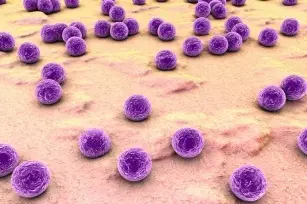Contents

Staph, as a bacterium, affects both animals and humans. A well-functioning immune system usually copes with minor infections. However, if the immunity is weakened, this bacterium will quickly make itself comfortable in our body, sometimes even leading to its complete devastation.
Danger of staphylococcal infection
This bacterium is so dangerous that it is not known what system or element of our body it can attack. Therefore, it is difficult to predict the symptoms of staphylococcal infection or the developing disease. They can be faint, imperceptible, or extremely trivial, but on the other hand, they can also lead to death. This is why staph is such a dangerous bacterium – because of its unpredictability.
How can you get staph infection?
- Contact with the blood of an infected person
- By droplet
- By touching and using everyday objects that the sick person has been in contact with
- Eating expired food
Food ailments
In the case of eating expired food or food that was previously touched by an infected person, the symptoms will mainly concern the sphere related to the digestive system. There may be a fever, but most of all there will be vomiting, abdominal pain and diarrhea. Symptoms may appear up to 48 hours after infection.
Staphylococcus on the skin
This bacteria can also cause various types of skin diseases, most often it causes folliculitis, boils, abscesses or other changes – often painful and festering. In infants, staph can cause bullous impetigo.
Staph in the lungs
If the bacteria attacks the respiratory system, you can expect diseases such as tonsillitis, otitis, bronchitis, pneumonia, but also problems with the trachea and throat. Most often, this type of infection occurs when immunity is lowered, when the body is too weak to fight the developing disease and the first symptoms.
These diseases require immediate contact with a doctor. Left untreated, they can bring very serious complications.
Treatment of staphylococcal infections
- Administration of antibiotics – drugs can only be prescribed by a doctor. In some cases, however, they may be insufficient, many staphylococci have become “resistant” to the antibiotics used
- Strengthening the body’s immunity. A healthy diet and a healthy lifestyle, consuming adequate amounts of vitamins and minerals
- Taking care of personal hygiene so that further infections do not occur: first of all, protecting those around you










steflakoki qanday davolash mumkun